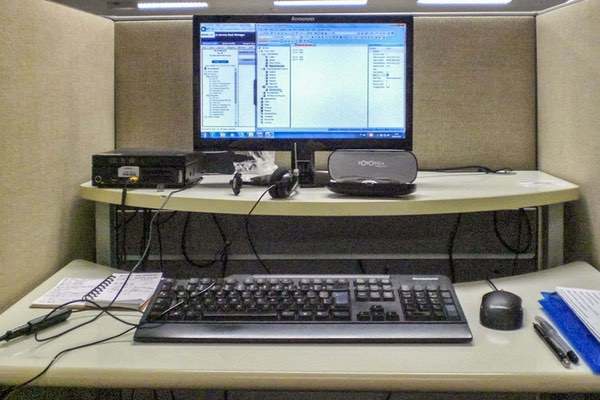Office Design has Evolved
Where we work can be considered our second home and the structure and design can heavily impact employee wellbeing and productivity. Over the year’s office design has changed considerably to suit the changing demands placed on employers by staff, technology, productivity and wellbeing to name a few. So, what has changed and how has the humble office design grown over the years?
Offices are thought to have made an appearance in Ancient Rome, however, it wasn’t until 18th Century that designated office buildings started making an appearance. It was the introduction of Steel frame construction really changed the landscape for office design. Although not a skyscraper by definition, the Oriel Chambers in Liverpool

was the first building of its kind to feature a metal-framed glass curtain wall. The inner iron structure meant that there was no need for walls to support it. This formed the pathway for the office revolution of the 20th Century and the rise of skyscrapers and the birth of open plan.
1910
Taylorism
One of the earliest office design concepts focused entirely on employee productivity. Created by mechanical engineer, Frederick Taylor, who sought to maximise industrial efficiency. Taylorism was known for its surprisingly scientific approach to boost employee productivity. Generally, the workers sat in endless rows and managers were in encircled offices so they could keep a watchful eye on their employees. While this particular design emphasised productivity, it didn’t take into consideration any kind of social interaction.
1930s
Aesthetic office design
Following the extravagant 1920s, the 1930s office design became much more aesthetically pleasing as major corporations became focused on 2 main things. A space that reflected their corporate image and getting the most work done, in the fastest time at the cheapest rate.
Although not too far away from Taylorism office design with “worker floors” there was more focus on recreation and employees were taking advantage of the space for both social and work activities. However, just as office design had started becoming an important consideration for organisations, the Great Depression and World War II put a halt to this.
1960’s
Burolandschaft
Originally a German concept, Burolandschaft roughly translates to an “office landscape”. Burolandschaft was one of the first office concepts that placed more importance of meeting the needs of the workforce and focused on encouraging interaction. As a result, the workplace became more open plan with teams grouped together in a less scientific manner using plants rather than partitions to create natural separations. Shaking the rigid Taylorist approach, managers and “workers” began to collaborate and work quickly became a much more social affair.
The Action Office
Following the revolutionary Burolandschaft office design came The Action Office. While taking the principles from the Burolandschaft design, The Action Office had a variety of different work settings, most notably meeting rooms, important for people who needed more privacy.
This was the first introduction to flexible semi-enclosed workspaces, encouraging movement where employees could move around to suit the task at hand. These subtle changes grew as the 1960s saw a massive increase of females coming to work which naturally led to a greater level of privacy or the need for “modesty boards” to cover the front of a female’s desk.
Over time, this advanced even further to the well known “cubicle farm” infamous in the 1980s.
The Cubicle Farm
Office design hit an all-time low in the 1980s. A concept originally designed for employee freedom became warped. The stack them high and sell them cheap mentality led to one of the most depressive office layouts in history. The forward-thinking office designs of the 60’s quickly digressed from employee wellbeing to profitability. It took for major technological advancements and decades stuck within these three walls to finally say goodbye to the cubicles.

Now
Offices were created to solve a problem: to host large amounts of people and enable easy communication.
Now with technology enabling communication with anyone, anywhere in the world, the focus for office design is to create a place where employees feel inspired, motivated and happy. It’s a relief to see organisations favouring employee wellbeing and office design is heavily influenced by psychology, technology and other cultural factors to allow employees to produce the best work possible.